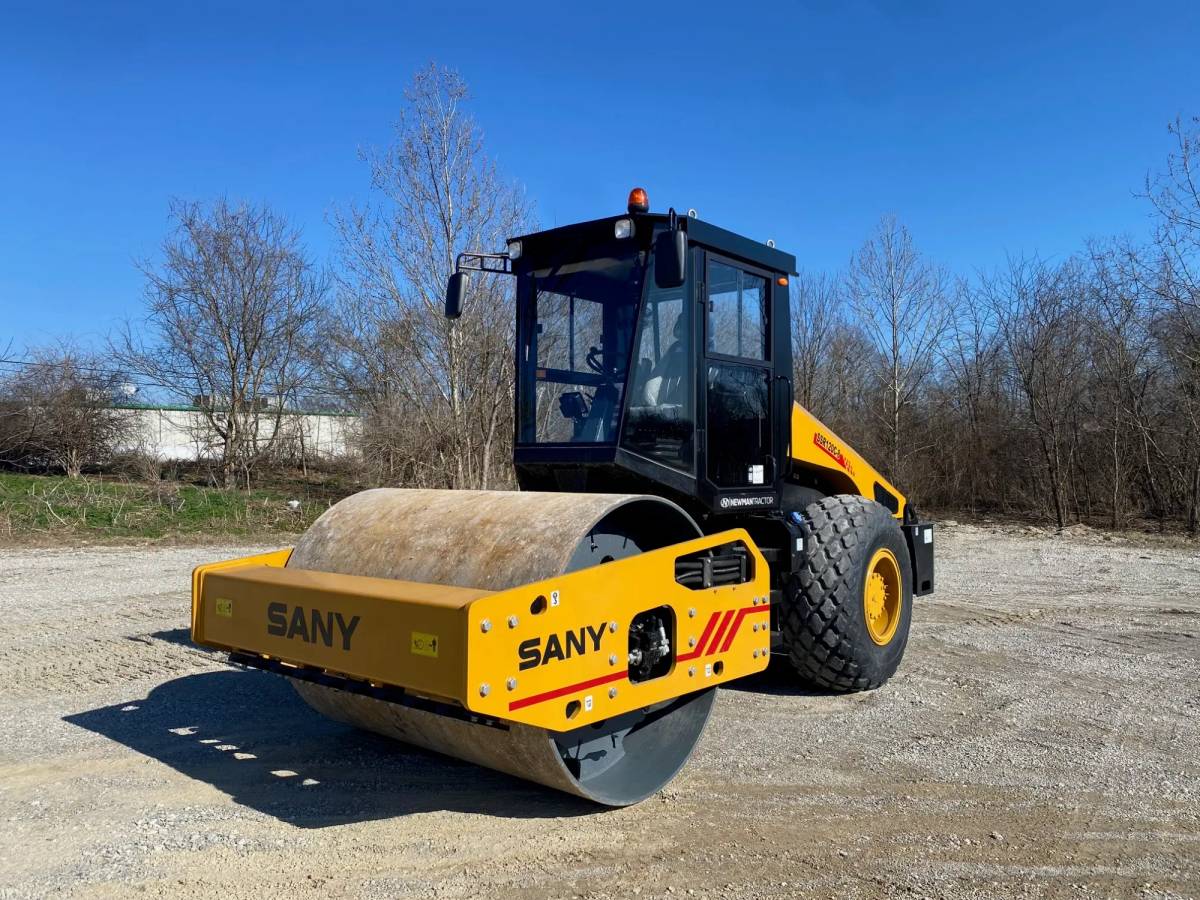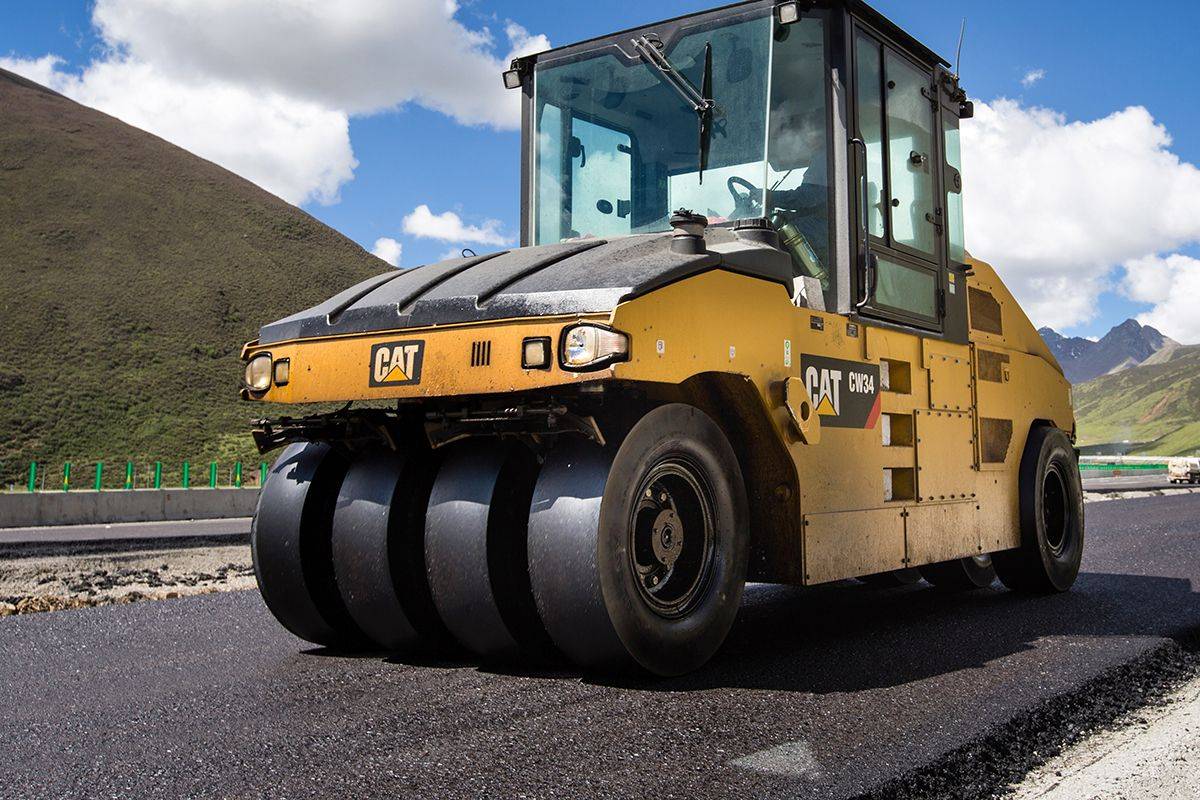Compactors (also called rollers, so we’ll use both terms) prepare surfaces like roads and building foundations. These heavy machines apply pressure to soil or asphalt, helping to compact materials to the required density. This process is crucial because it makes the ground stable and strong enough to support the weight of buildings, roads, and other structures.
We'll explore different types of compactors or rollers, each designed for specific tasks and materials. From smooth-drummed rollers to padfoot rollers and several others, we’ll discuss how each type fits into the construction process.
1. Smooth-Drum Rollers

Smooth-drum rollers are one of the simplest types of compactor rollers used in construction. They consist of large steel drums (84” in a common size) that are either hollow or filled with water or sand to increase their weight. There are two main types: single-drum rollers, which have one large drum in the front and wheels at the back for support, and double-drum rollers, which have two drums that provide more uniform compaction and coverage. Both are vibratory compactors.
Applications
Smooth-drum rollers are best used on materials like asphalt and fine-grained soils. They are commonly seen smoothing new road surfaces or leveling the grounds before laying down a parking lot. The weight of the drum in these rollers helps to flatten the material beneath it, making surfaces level and compact.
Advantages
The main advantage of smooth-drum rollers is their ability to create a flat surface. They are particularly effective for projects where a fine finish is crucial, such as roads and playgrounds. They can also be adjusted by adding or removing weight, allowing for more flexibility depending on the project's needs.
Possible Limitations
One limitation of smooth-drum rollers is that they are not as effective on very loose or rough surfaces. They also may not achieve the necessary compaction for more complex soil compositions without multiple passes or additional compaction strategies.
2.Padfoot Rollers

Padfoot rollers, also known as tamping rollers or sheepsfoot rollers, are specialized for compacting cohesive soils like clays and silts. These rollers are a vibratory compactor recognizable by their drums, which are covered in protruding pads or 'feet' that can efficiently compact and manipulate the soil.
Applications
These rollers are crucial for stable foundations, such as road sub-bases, embankments, earth dams, and landfill compaction. The intense kneading action provided by the feet makes these rollers particularly effective on cohesive soils that need deep, thorough compaction.
Advantages
The primary advantage of sheepsfoot and padfoot rollers is their ability to achieve deep and uniform compaction. Their unique design allows them to exert high pressure on the soil, efficiently compacting it to greater depths than smooth drum rollers. This makes them indispensable for ensuring the stability and durability of critical infrastructure.
Possible Limitations
While these rollers excel in compacting cohesive materials, they’re not great for non-cohesive materials like sand or gravel. Additionally, the surface finish they leave is relatively rough, which may require additional finishing with smooth drum or pneumatic tire rollers to prepare the surface for use.
3. Pneumatic Tire Rollers

Pneumatic or rubber-tired rollers feature multiple air-filled tires (usually four or five) that provide a more uniform pressure distribution across the compact surface. Unlike rigid rollers, these compactors can conform to slight variations in the terrain, making them particularly effective for projects that require a delicate touch.
Applications
Pneumatic tire rollers are highly versatile and can be used on soil and asphalt. They are especially useful in sealing the surface of hot mix asphalt during road paving, helping to push the aggregate into the asphalt binder without crushing the aggregate particles. They are also effective for compacting layered soils and providing the final compaction pass to achieve a smooth road surface.
Advantages
One of the key advantages of pneumatic tire rollers is their ability to adapt to different surface conditions. Their inflatable tires can be adjusted in pressure to suit specific compaction needs. This flexibility makes them ideal for various construction sites, ensuring effective compaction across irregular surfaces.
Possible Limitations
While pneumatic tire rollers are excellent for achieving surface uniformity, they may not be the best choice for deeply compacting loose or cohesive soils. For these tougher jobs, more specialized rollers like sheepsfoot or padfoot rollers might be necessary to achieve desired compaction depths.
4. Vibratory Rollers

Vibratory rollers are equipped with one or two cylindrical steel drums and are notable for their ability to vibrate while rolling. These vibrations enhance compaction by packing down the soil particles, making them more effective at compacting granular and cohesive soils.
Applications
Vibratory rollers are versatile and essential in modern construction, particularly for road building and large-area compaction. They are ideal for compacting soil foundations and asphalt pavements. Operators can compact materials more deeply and effectively by setting the drum to vibrate than with static pressure alone.
Advantages
The main advantage of vibratory rollers is their ability to achieve greater compaction depth and density. This makes them suitable for various construction tasks, from large-scale industrial to local road construction. They are especially effective on granular materials, where the vibration helps to arrange the particles into a tighter configuration.
Possible Limitations
While vibratory rollers are highly effective, their intense vibration makes them unsuitable for use near structures that could be damaged by shaking, such as old buildings or sensitive installations. Excessive vibration on certain soils can cause over-compaction, reducing soil permeability and potential drainage issues.
5. Grid Rollers

Grid rollers are characterized by their cylindrical heavy steel surface, constructed of a grid of steel bars. This design allows them to exert a crushing force on the particles of the material being compacted, which is particularly effective for large aggregate or rocky soils. These are less common and sometimes come in a pull-behind variation, but they're still out there.
Applications
Grid rollers are mainly used in projects where the soil contains large rocks or is particularly abrasive. They are excellent for compacting subbases and subgrades, crushing and embedding rocks in dam construction, road base layers, and landfills. Their ability to compact very coarse materials makes them valuable in specific heavy-duty construction tasks.
Advantages
The primary benefit of grid rollers is their ability to compact larger particles and crush smaller rocks within the soil. This helps create a dense and stable layer supporting heavy structures. Their robust construction and crushing capability make them ideal for tough environments that other rollers might struggle with.
Possible Limitations
Due to their aggressive compaction style, grid rollers are unsuitable for finishing surfaces, such as the top layers of roads or pathways. They are also less effective on fine-grained soils or in applications requiring a smooth finish. Their use is best reserved for the initial stages of soil compaction, where rough and heavy manipulation is needed.
Conclusion
Choosing the right roller for a project is crucial for ensuring the longevity and stability of the construction work. It's not just about what equipment is available but also about considering the project's specific needs and the site's characteristics. For instance, the type of soil, the depth of compaction needed, and the desired finish all play a role in selecting the most effective roller.
As we've seen, each roller type has its strengths and limitations, making it suitable for particular situations. When planning your next construction project, it's essential to carefully assess the ground conditions and project requirements to choose the best compaction equipment. Doing so will help ensure your construction efforts are as effective and durable as possible.
